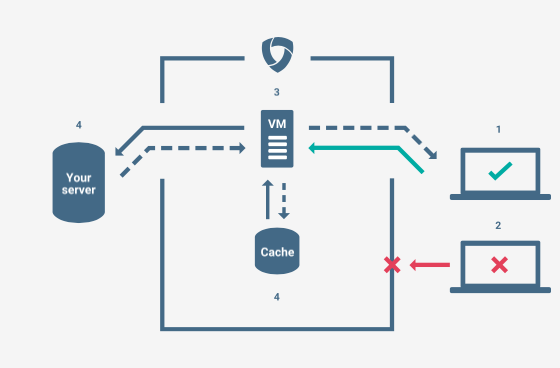Google is offering a revolutionary service in the field of news and media security. Project Shield is the company’s new initiative and free service that uses Google technology to protect news sites and free expression from DDoS attacks on the web.
Google Project Shield

Free DDoS protection for websites
Aimed at curbing DDoS attacks on your media outlet, Project Shield is built on Google’s infrastructure, creating a multi-layer defense system to protect your site against cyber attacks, including layer 3/4 and layer 7 attacks. This new service protects your website in two ways:
- Filters harmful traffic – If someone tries to take your website down with a DDoS attack, Project Shield can identify and block harmful traffic so your website stays up and running.
- Absorbs traffic by caching – Google saves cached versions of your website thus protecting numerous requests to access the actual web pages. This reduces malware traffic and, thus, DDoS attacks.
When it comes to website performance, Project Shield is expected to have varied effects depending on the type of website. Some Project Shield users see better website performance because of Project Shield’s caching features. Other users see slightly slower performance as traffic passes through Project Shield. However, you can easily test it out on a small audience after launch and see the performance.
A great feature of Project Shield is that, although free, no ads are built into the applicant’s website. It also doesn’t exploit websites to target advertising or to analyze ads-related data.
Read: Why are websites hacked?
STEPS TO REGISTER FOR PROJECT SHIELD
- Tell Google which websites to protect.
- Verify that you own the blog or website(s) you want to set up with Project Shield.
- Put in the correct details to find the web server that hosts your content, either with an IP address or a hidden hostname.
- Change your Domain Name System (DNS) records to point traffic to Project Shield’s servers.
HOW IT WORKS
As shown in the image above, Project Shield acts as an actual filter that monitors all the traffic to your website and removes all the bad elements.
User requests enter Google’s network at a location close to the end user and then are proxied through the nearest Google Cloud data center. This improves performance and reduces latency. If it looks like the traffic is part of an attack, the service rejects the request and prevents it from reaching your website’s server. Requests are filtered at the edge of our network and again in Shield’s data centers.
WHO CAN APPLY
You are eligible to apply for Project Shield, only if your website(s) or blog falls under any one of these criteria:
- News or Independent Media
- Elections Information Reporting
- Human Rights Information Reporting
- Individual journalists.
The following do not qualify:
- Gaming sites
- Business sites
- Sites involved in illegal activities.
If you think you are eligible, you should definitely take advantage of Google’s free offer.